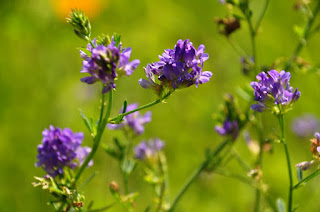CREP Can Help You Protect Your Land For Future Generations
Conserving water and soil resources helps to protect the land for our use now and for future generations. In fact, landowners often tell us the reason they request a conservation plan is to protect what is special about their land today, so that it will benefit their kids and grandkids once it is passed down. The connection between humans and the land is a strong one. Like Hugh Hammond Bennet, the Father of Soil Conservation once said, “Take care of the land, and the land will take care of you.”
.jpg) |
| This grassland is planted to warm season grasses and wildflowers. It is improving soil health, and providing habitat for many species of wildlife including pollinators. |
Michigan’s CREP is a partnership effort between the Farm Service Agency, Natural Resources Conservation Service, Michigan Department of Ag and Rural Development and Conservation Districts. For more information on CREP and CRP please contact the Shiawassee County Farm Service Agency at (989) 723-8263 x2 or the Shiawassee Conservation District at (989) 723-8263 x3.
To be eligible for CREP, the land must be
in one of the targeted watersheds. In Shiawassee County that watershed is the
Saginaw Bay. The land must also have a cropping history of four out of six
years between 2012-2017.
We believe that voluntary conservation is
key to a sustainable environment and better communities. We also believe that
landowners and farmers want to do their part to protect the natural resources
we all rely on. Even small changes to a cropping operation, such as planting a
50-foot-wide filter strip along a waterway, can make a huge difference in water
quality and wildlife habitat. Healthy environments mean increased crop
production, better recreation opportunities, and cleaner water.
Michigan’s CREP is a partnership effort between the Farm Service Agency, Natural Resources Conservation Service, Michigan Department of Ag and Rural Development and Conservation Districts. For more information on CREP and CRP please contact the Shiawassee County Farm Service Agency at (989) 723-8263 x2 or the Shiawassee Conservation District at (989) 723-8263 x3.
 |
| This filter strip is planted between row crops and a stream. It is filtering sediment and nutrients from water runoff before it enters the surface water-protecting water quality. It is planted to a mix of timothy, orchardgrass, alfalfa and clover. |



Comments
Post a Comment